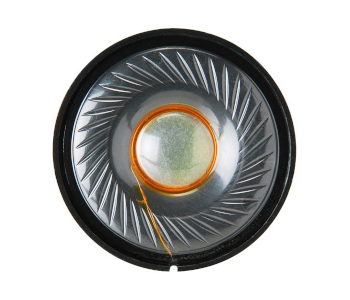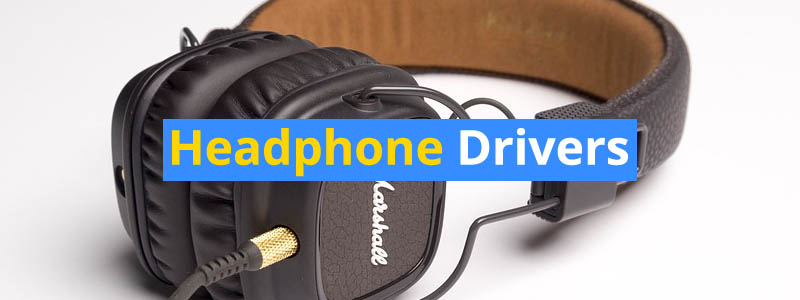Everything You Need to Know About Headphone Drivers
Are you interested in buying a pair of headphones, but aren’t sure how audio drivers work? It’s a good idea to familiarize yourself with the different types of audio drivers and how they operate. Audio drivers are the physical unit in each earcup that’s responsible for producing audio. Understanding how they work allows you to buy the ones that match your preferences.
In this article we will cover the different types of audio drivers by examining their advantages and disadvantages. You’ll be better equipped to read headphone product descriptions by appreciating the information presented in this guide.
Audio driver size

Audio drivers are measured in mm and are usually in the range of 30-50mm for headphones and 8-15mm for earphones. Generally speaking bigger is better as the audio will be more impactful. You’ll enjoy louder volume levels without noticeable distortion.
However, the downside of larger audio drivers is the added weight and bulk. For example, you’ll notice that the majority of 50mm headphones have bigger earcups when compared with 40mm options. Some brands use clever design implementations to maintain bearable bulk and use lightweight materials to keep the weight down.
Type of audio drivers
Pay close attention to the headphone description and you’ll notice the specific type of audio driver implementation. There are are only 4 main audio driver types that you need to know about to help differentiate the quality of headphones. Understanding how they work and differ can help you make the right buying decision for your needs.
Dynamic drivers
These are the most popular audio drivers and they make use of large diaphragms. They do a great job of achieving the correct sound pressure without much power and bass strength is impressive too. That’s because dynamic drivers are great at displacing air, which is a key ingredient of good bass.
Sound is created from movement based on the physics of magnetism and electromagnetism. The 3 main components of the dynamic driver are the neodymium magnet, voice coil, and diaphragm that’s attached to the voice coil.
Distortion is one of the main complaints of dynamic drivers – especially at higher volume levels. However, top-tier brands tend to overcome this problem through good engineering without inflating the cost.
Balanced armature drivers
These audio drivers are relatively small, which means they are only found within in-ear headphones. The driver is made up of a miniature arm that’s surrounded by two magnets and the movement of these magnets creates audio when there is a current. This audio driver type is able to cover a specific frequency range very well, but the downside is that it’s typically narrow.
Balanced armature drivers are also poor at creating bass, but they can be combined with dynamic drivers to overcome this problem. Therefore, some earbud designs make use of multiple drivers that are responsible for different portion of a frequency range. Noise isolation is excellent with balanced armature drivers since they do not need to displace air in order to create audio.
Planar Magnetic Driver
Planar magnetic headphones are typically found in high-end headphones due to the sophisticated design. For example, you’ll find them in Audeze headphones that offer some of the best audio reproduction in the marketplace.
These headphones are relatively large so be prepared for a bulky designed. Magnetic fields are used to produce sound so they are similar to dynamic drivers. However, instead of moving a voice coil the magnetic field directly affects the diagram. This leads to bigger magnetic components that weigh more and are larger in size.
This driver implementation ensures distortion is extremely low, which means the audio fidelity is excellent. Furthermore, the bass response is great too allowing you to enjoy bass boosted tunes.
Electrostatic driver
Electrostatic drivers are uncommon and very expensive so you won’t find them in the majority of headphones. A thin electronically charged diaphragm is located between 2 conductive plates/electrodes of the opposite charge. Soundwaves are created as charged air is pushed and pulled between the electrodes thereby vibrating the diaphragm.
The complicated driver design is typically found in high-end open back headphones, but the extra-large size means they are not portable. They are more suited for professionals or amateurs that want to enjoy music at home. The wide and lifelike soundstage adds a lot of immersion to the audio experience.
Multiple drivers vs one driver
A single driver typically produces a frequency range of 20-20KHz, whereas a multiple driver design focus on different segment of the same range. This increases the accuracy of the audio reproduction, which in turn means the music sounds better.
However, a triple or quad driver headphone design doesn’t automatically lead to a better end result. The driver implementation still matters and a single well-executed driver can still be better overall.
Conclusion
Evaluating the audio driver is an important component of the headphone selection process. By identify the audio driver type you can determine the audio quality format to expect and the physical headphone attributes. For example, you’ll know planar magnetic headphones are generally heavier and bulkier.
Keep in mind that audio driver type, size, and their number are not the only indicators of audio quality. The way the brand implements the technology plays a big role in the end product. Therefore, use the information gained here to your advantage, but also consider other factors in the buying selection process.

